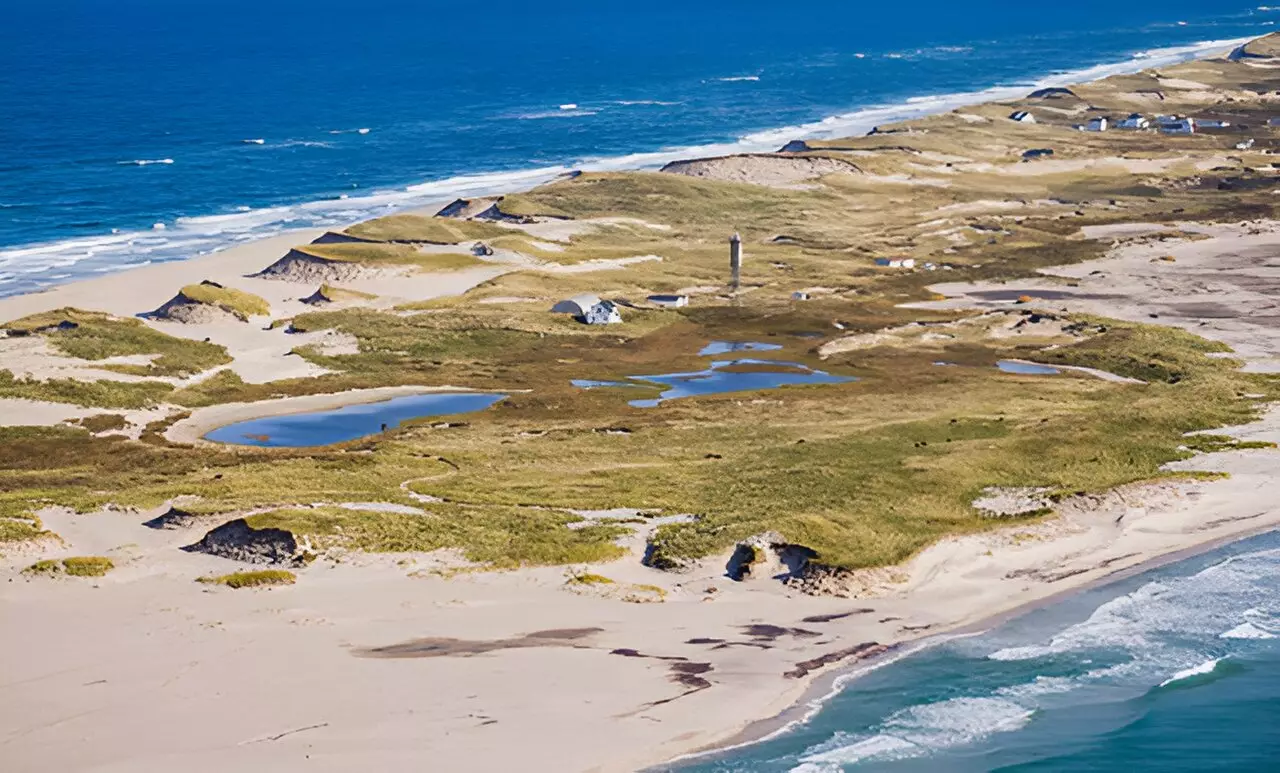Sable Island, located 200 kilometers off the coast of Nova Scotia, is renowned for its mythical wild horses, scenic dunes, and abundant wildlife. Over the centuries, the island has been an oasis for rare seabirds, plants, and insects, persisting despite its vulnerable location in the path of powerful storms. However, recent research has shed light on an alarming issue that now threatens the delicate balance of this unique ecosystem.
A team of scientists from Dalhousie University recently conducted a comprehensive assessment of the quantity and quality of Sable Island’s fresh groundwater, which supports the diverse life forms on the island. By comparing data collected from 2019 to 2022 with measurements taken in the 1970s, the researchers discovered a disturbing trend of fresh groundwater loss. This loss is primarily attributed to decades of dune erosion, seasonal waves, storms, and hurricanes that batter the island.
During storms, the beaches experience flooding, allowing seawater to infiltrate the ground and contaminate the fresh beach groundwater. With repeated battering by storms and erosion, the floodwaters erode dunes and gradually push salinized groundwater landward, resulting in long-term freshwater loss. Julia Cantelon, a Ph.D. candidate in Dalhousie’s Coastal Hydrology Lab and the lead researcher of the study, emphasizes the significance of Sable Island’s historical monitoring data in understanding the connection between long-term changes in fresh groundwater and the shape of its dunes.
Small islands like Sable Island have a critical freshwater resource known as a “freshwater lens.” This zone of fresh groundwater, which has a specific shape, flows into freshwater ponds on the island, sustaining its rich ecosystem. However, the erosion of dunes on Sable Island has significantly diminished the volume of the freshwater lens, raising concerns about the availability of freshwater in the future. Dr. Barret Kurylyk, co-author of the study and the Canada Research Chair in Coastal Hydrology, points out the broader implications of their findings, particularly for densely populated small islands that heavily rely on groundwater for drinking water supply.
The research conducted by the Dalhousie team highlights the vulnerability of coastal fresh groundwater resources to saltwater contamination caused by seawater flooding. As thousands of kilometers of shoreline suffer from coastal flooding annually, the need for comprehensive and long-term monitoring and mapping programs becomes urgent. By understanding the processes of saltwater incursion, appropriate management actions can be taken to safeguard these vital resources. The study further emphasizes the often-overlooked role of erosion as a driver of freshwater loss, complementing previous research that focused primarily on human activities, sea-level rise, and coastal flooding.
Parks Canada, in collaboration with partners and the Mi’kmaq of Nova Scotia, has assumed the responsibility of protecting Sable Island since the creation of the National Park Reserve in 2013. The research conducted by the Dalhousie researchers has greatly enhanced Parks Canada’s understanding of the freshwater dynamics on the island. It highlights the crucial role of hydrology in the overall health of the offshore sand island and sheds light on the surprising effects of coastal processes like storms and waves. With the fragility of Sable Island’s ecosystem now evident, both Parks Canada and the scientific community recognize the urgent need for proactive measures to preserve this unique and valuable natural habitat.
The vital freshwater resources of Sable Island are facing imminent threats due to ongoing erosion and the impact of storms and waves. The findings of the Dalhousie University-led study underscore the necessity for increased monitoring, research, and conservation efforts to ensure the preservation of ecosystems on small islands worldwide. By understanding the complex dynamics between freshwater and coastal processes, it is possible to take the appropriate steps to mitigate the loss of freshwater resources and protect the delicate balance of these unique environments.


Leave a Reply